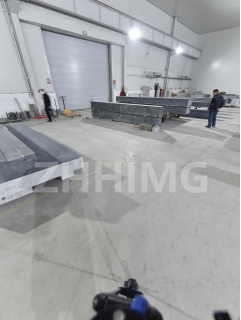Granite components are an essential part of industrial computed tomography products. Assembling, testing, and calibrating these components properly is crucial for accurate and reliable results. In this article, we will discuss the steps involved in assembling, testing, and calibrating granite components.
Assembling Granite Components
The first step is to ensure that all the required components are available and in good condition. Most granite components come with a set of assembly instructions, which should be followed carefully. These instructions usually include a step-by-step guide on how to assemble the components correctly.
The next step is to mount the granite component in the proper orientation and alignment. Proper alignment is essential to ensure that the component performs its function accurately. The component should be mounted on a stable platform and secured correctly to prevent any movement during operation.
Testing Granite Components
After assembling the granite components, the next step is to test them. Testing is essential to check if the components are functioning correctly. The first test is usually a visual inspection, where any visible damages or defects are identified. This step is crucial to ensure that there are no external damages to the component that could affect its performance.
The next step involves functional testing. This test checks if the component is performing its intended function correctly. The equipment used for testing should be calibrated to ensure accurate results. The test results should be compared to the specifications provided by the manufacturer to ensure that the component is functioning as per the required standards.
Calibrating Granite Components
Calibration of granite components is the final step in the process. Calibration involves adjusting the settings or parameters to ensure that the component is performing optimally. The calibration process may vary depending on the specific component being calibrated.
The process of calibrating a granite component may include adjusting its sensitivity, resolution, and accuracy. The calibration process may involve the use of specialized equipment and tools. The calibration results should be documented and compared to the manufacturer's specifications to ensure that the component is performing optimally.
In conclusion, assembling, testing, and calibrating granite components are crucial steps in ensuring accurate and reliable results from industrial computed tomography products. Proper care should be taken to ensure that all the steps are followed correctly to ensure optimal performance. With proper assembly, testing, and calibration, granite components can provide accurate and reliable results for many years.
Post time: Dec-07-2023

